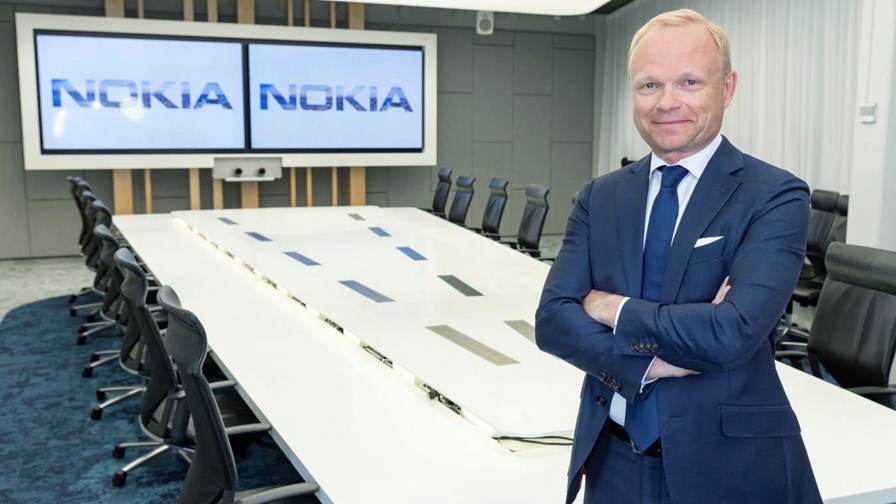
Picture courtesy of Nokia
- Vendor is implementing a new cost-cutting program
- New business groups have created new business plans
- Up to 10,000 jobs, about 11% of total headcount, could go
When Nokia CEO Pekka Lundmark (pictured above) last December unveiled the vendor’s new strategy based on a “three-year journey” and stuck to the 2021 margin target despite warnings of a tough year in the mobile networks market, it seemed inevitable that job cuts were on the horizon. (See Nokia CEO preps for ‘three-year journey’ to determine future of the vendor.)
Well, now they’re here. Nokia says its four new business groups have identified their new “cost bases” and that, as a result, the company will be reducing its annual operating costs by €600 million by the end of 2023.
As part of the new cost cuts, between 5,000 and 10,000 staff – between 5.6% and 11.1% of the company’s employees – will lose their jobs during the next two years, taking the total headcount from 90,000 to between 80,000 and 85,000. The company stated in its official announcement about the cost-cutting measures the exact number of job cuts “will depend on market developments over the next two years.”
Nokia CEO Pekka Lundmark, who unveiled the vendor’s new structure and management team last October, noted: “Decisions that may have a potential impact on our employees are never taken lightly. Ensuring we have the right setup and capabilities is a necessary step to deliver sustainable long-term performance. My priority is to ensure that everyone impacted is supported through this process.”
The restructuring process will cost Nokia between €600 million and €700 million during the next three years, with about half of those charges to be recorded this year.
The company’s announcement, which can be read in full here, provides a smattering of commentary on each of the four divisions:
Mobile Networks will invest further in 5G R&D, as previously announced, but also “streamline its portfolio and reduce investment levels in mature or declining parts of the portfolio; continue to reduce site fragmentation; reduce overlapping activities and drive further cost efficiencies”;
Cloud and Network Services (the software business – excluding Mobile Networks network management – including voice and packet core solutions, enterprise solutions, managed and advanced services) will focus on the shift to cloud-oriented consumption of virtualized capabilities and services;
Network Infrastructure (IP Routing, Optical Networks and Fixed Networks, as well as Alcatel Submarine Networks) remains “largely unchanged” but will increase R&D investments;
Nokia Technologies (patent portfiolio) will remain largely unchanged.
The company says it will provide further detail during its Capital Markets day on 18 March.
Nokia has had a tough time in the past two years, particularly in the mobile infrastructure market where its initial choice of FPGA chips for 5G impacted its pricing, deliveries and market share. It has long since reversed that decision and is in the process of shipping a greater volume of 5G mobile network infrastructure based on its Reefshark chips, while at the same time capitalizing on its leading position in 4G/5G private wireless network infrastructure and positioning itself as a major player in the virtualized and Open RAN sectors.
Its commitment to supporting the cloud-oriented and potentially disaggregated infrastructure requirements of enterprise and telco customers was evident this week as Nokia announced RAN development partnerships with all three main hyperscale giants. (See Nokia seals cloud RAN relationships with AWS, Azure, Google Cloud.)
- Ray Le Maistre, Editorial Director, TelecomTV
Email Newsletters
Sign up to receive TelecomTV's top news and videos, plus exclusive subscriber-only content direct to your inbox.




